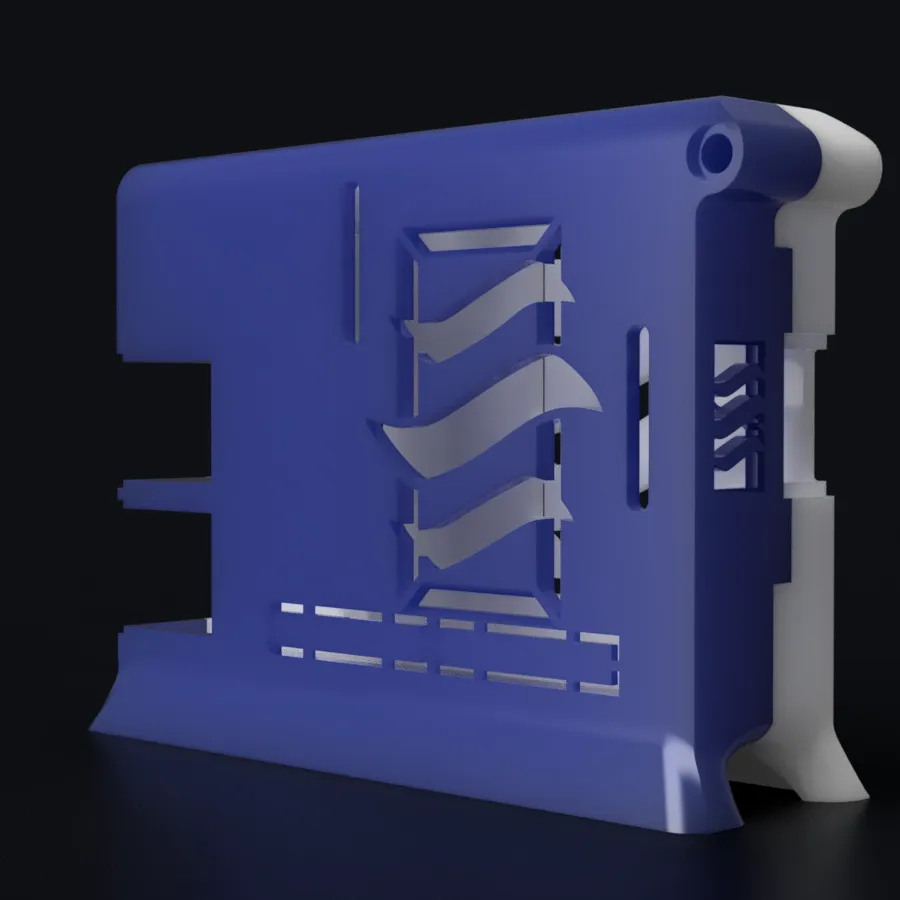
There was something that kept nagging at me after I completed the SteemPi Full Case Redesign a couple of weeks ago. Putting a media device on your shelf has a classic history. Something just a little blocky, just a little high-tech – it's a perfectly reasonable design for a do-it-yourself steem specific media device.
But I found myself flipping through catalogs, walking through stores, and really looking at the industrial design of the current crop of household under-TV appliances, and I noticed a strange commonality.
They all have vertical designs! Probably as an effort to shrink the footprint of the device on the shelf, but there's a real affection for putting things in a layout which has them standing.
The full case redesign that I had submitted was – less than ideal in that sense. Oh, it was very nice. It certainly served the purpose. It was fit for task. And you could stick it on your shelf in a bunch of different ways, really – but it was missing something.
Late last night, I started tinkering around to try and find a solution that satisfied me.
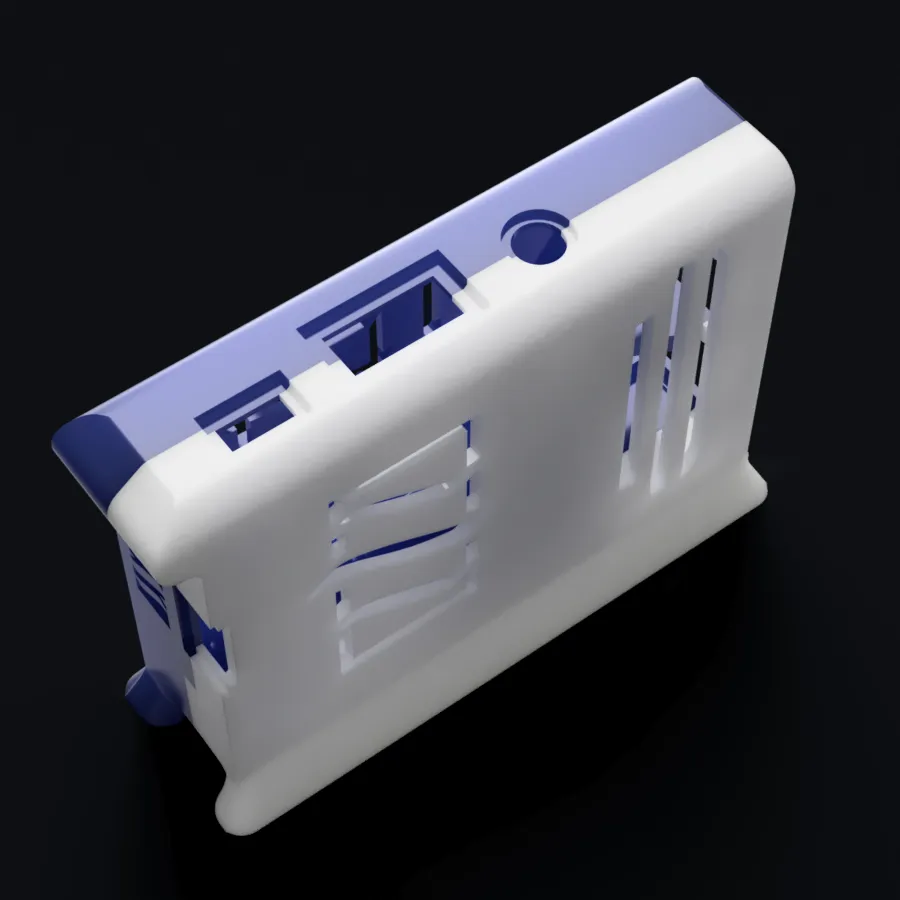
The first challenge was to find a side that could be the bottom. The Raspberry Pi is well festooned with cables and ports. This makes deciding how to orient it somewhat difficult. No matter which way you put the thing, something is going to be emerging in a direction which is less than ideal.
Carefully looking at the case that I had put together, I noticed that one side had no ports. It just had a window. That was going to become the downward facing side.
Once reoriented, I had to decide what kind of broader foot I really wanted. There were a couple of problems with that. Firstly, the entire case was held together by four separate screws. Great for absolute security in a situation where you think the device is going to get knocked around a lot, but this is going to be sitting on a shelf underneath a TV. It really doesn't need four screws, so I removed the features for all but one, which seemed pretty sufficient. If you build one of these and feel that it's just too loose at the other end, a small dab of white glue at the upper corner ought to be more than enough to secure it.
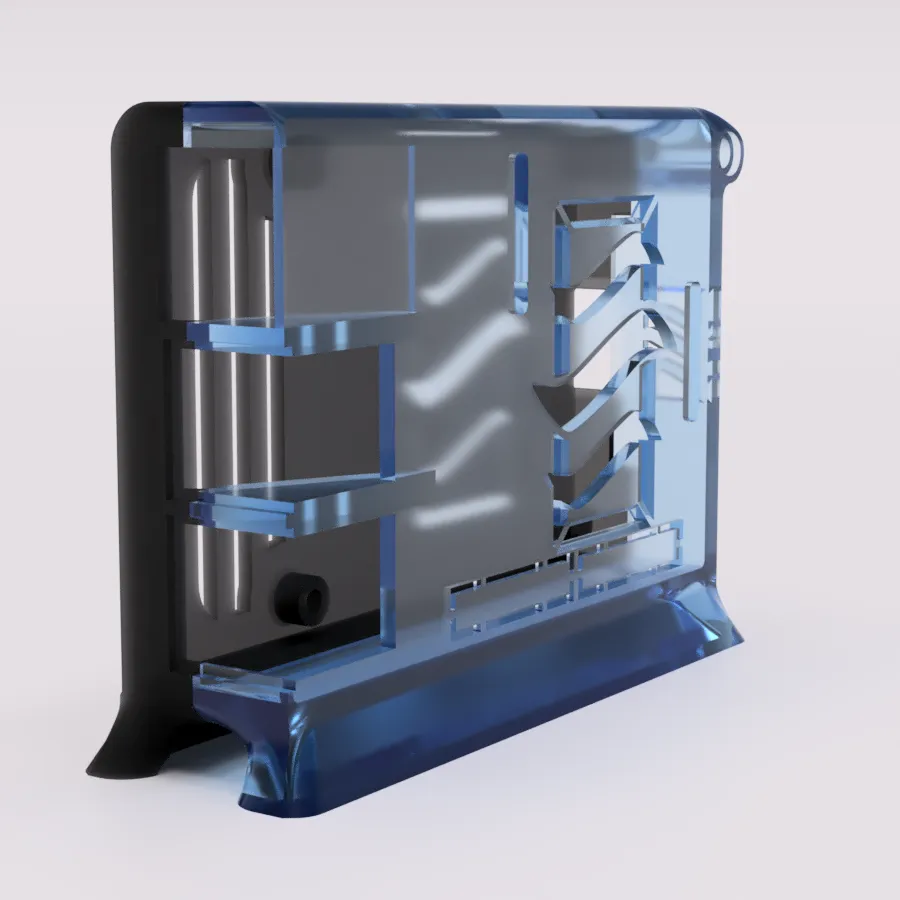
Having removed to the screws on the bottom side, I wanted something relatively simple, so I just created a rectangular edge a bit wider than the bottom of the console and did a Loft from each side to the bottom of the plate. It matched up nicely enough, but it looked like things were just too solid down there. There was too much plastic. It was the matter of a moment to sketch a quick circle and extrude it the length of the base, making a nice, simple cut out.
Still, that left me with the vent slots on what was previously the bottom of the console. The bull's-eye-style look just wasn't doing it, and it wasn't immediately obvious what to do – until it was. Duh! Shoot the SteemPi logo on the top all the way through to the backplate and make a few slight changes to the design so that they weren't identical.
Excellent! That gets us a base and a backplate that looks like it has a harmonious design with the front. But something was still bugging me.
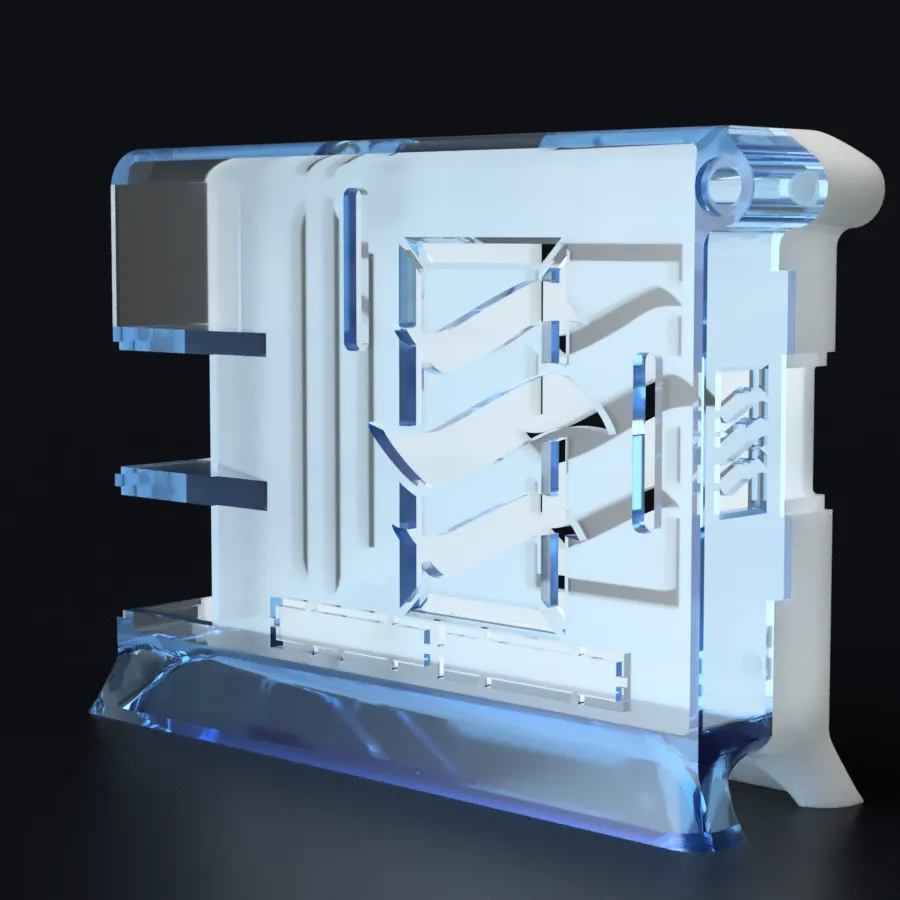
The original design was extremely hard-edged and linear. While it felt very much like a traditional Raspberry Pi case, it didn't feel as much like a "modern TV appliance" as I would like. Given the limitations of the SBC inside, I didn't have a whole lot of choices. The mounting points for Pi are pretty fixed. You need a fair amount of clearance above the chips for proper ventilation. The ports are in places that you can't move around.
What I ended up deciding was that having removed three of the screws, I could apply some fillets to some of the harder edges, smoothing things down so that the more organic, more modern feel came across a bit more aggressively.
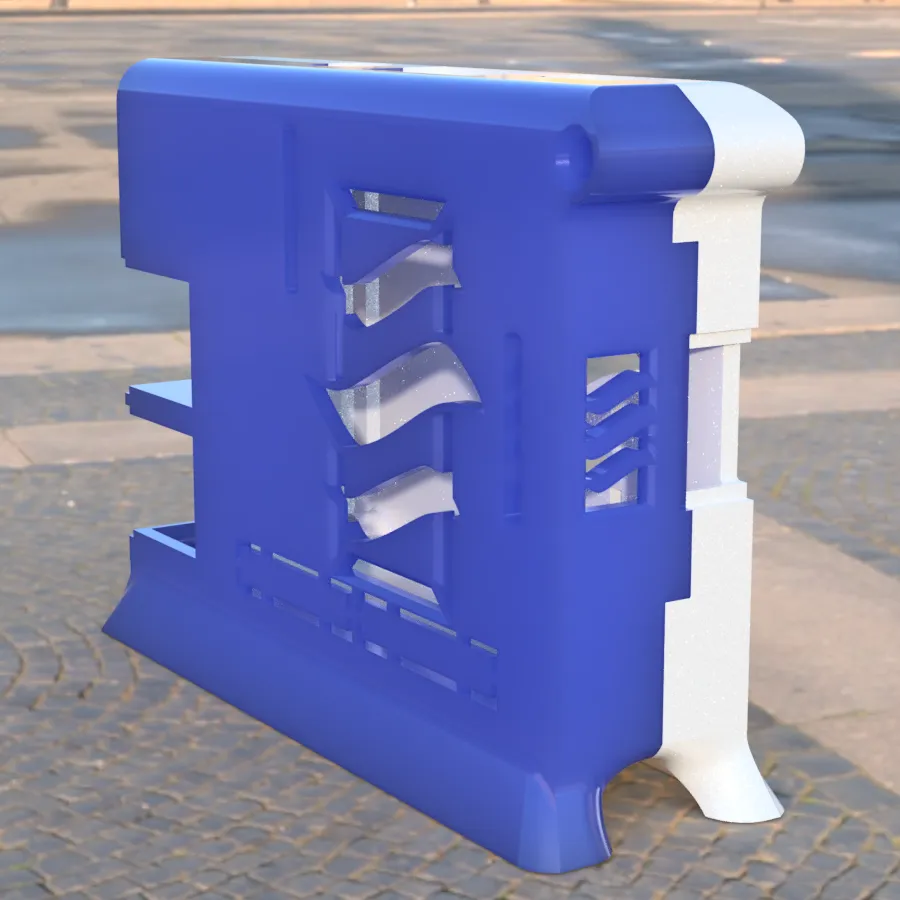
So that's how I ended up here.
You'll see that I have done a number of renders in Fusion 360, some of which were done with translucent or transparent materials for the pure, electric joy of seeing what a true injection molded polycarbonate case would look like. It would, in fact, look pretty damn fine.
Hopefully you have enjoyed sharing some of my thought processes as regards this case redesign case redesign and if you have questions or comments, have no hesitation to drop them below.
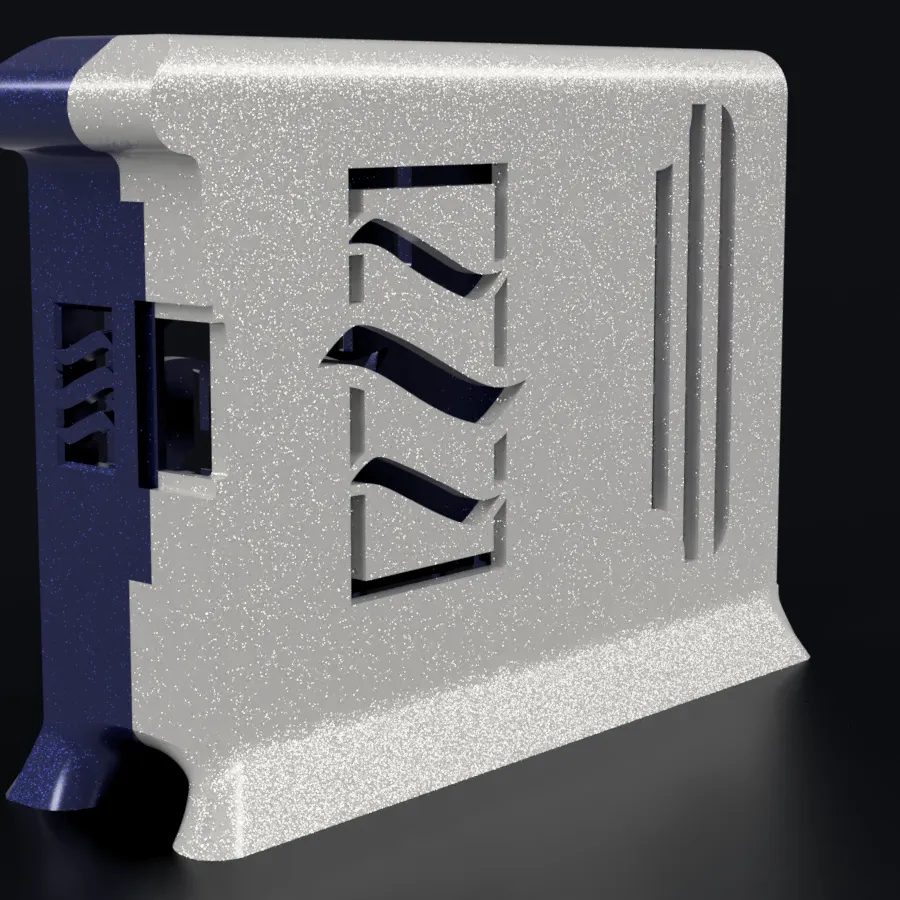
As always, STL files for printing as well as STEP files for the parametric modelers in the audience who want to get their hands on the geometry directly are also stored in the GitHub repository.
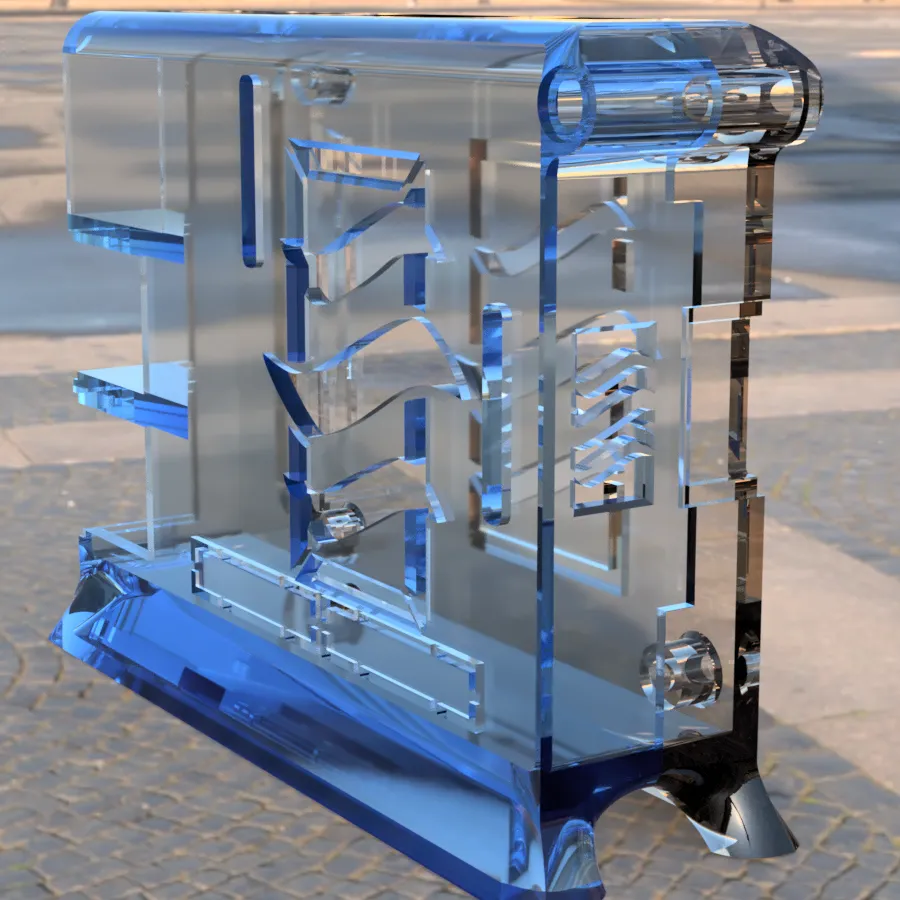
References
Posted on Utopian.io - Rewarding Open Source Contributors
